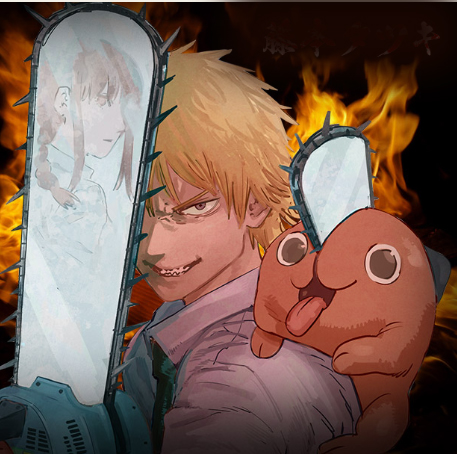# Unveiling the Hidden Depths: The Surprising Meaning Behind Fujimoto Tatsuki’s Art in Chainsaw Man
##
1. The Genesis of Chainsaw Man: A Creative Revolution
Fujimoto Tatsuki’s *Chainsaw Man* is not simply a manga series; it’s a bold exploration of the vast spectrum of human emotions that we all experience. From its very first pages, it shatters the confines of traditional storytelling. The blend of horror and dark comedy creates an inviting atmosphere, inviting readers to confront the raw realities of life—where demons symbolize not just monstrous entities but also our own fears and desires. It’s an audacious leap into the chaos of existence, daring us to journey alongside Denji, the protagonist, who embodies the struggle to find meaning amidst despair.
What makes *Chainsaw Man* so captivating is its ingeniously crafted duality. Denji’s chaotic life is juxtaposed with moments of warmth and human connection, infusing the narrative with a sense of hope. As we witness Denji’s transformation from a struggling young man to a chainsaw-wielding hero, we’re encouraged to reflect on our own lives. What are our true aspirations? What drives us in our own chaotic jungles? Fujimoto offers an unflinching look at our yearning for love, acceptance, and purpose, prompting us to consider the deeper motivations behind our own ambitions.
The arrival of *Chainsaw Man* marks a revolutionary shift within the manga landscape. It challenges the notion that emotional depth must be sacrificed for the sake of sensationalism. Fujimoto’s knack for creating rich, layered characters keeps readers engaged and eager to unravel the complexities of their journeys. The series invites us into a vivid exploration of self-discovery and growth, reminding us that even in the darkest corners of life, there lies an invitation to seek out joy and connection.
##
2. The Artistry of Chaos: Visual Storytelling in Chainsaw Man
In *Chainsaw Man*, visual storytelling is a delightful spectacle that dances off the pages! Fujimoto’s art style is characterized by dynamic lines and lively character designs that perfectly encapsulate the chaotic world he has created. Each panel bursts with energy, effectively marrying horror with humor and drawing readers into a vibrant narrative pulse. The frenetic battles contrast with tender moments, crafting a rhythm that captivates and enchants, making every turn of the page an exhilarating adventure.
Fujimoto’s use of visual metaphors is nothing short of genius. The recurring motif of chainsaws, for instance, isn’t simply a nod to Denji’s transformation; it symbolizes the relentless struggle against societal shackles. The artwork reveals the harsh realities of life while celebrating the potential for liberation when we dare to embrace our true selves. These artistic choices prompt readers to delve deeper, igniting a conversation with the illustrations that mirror our own struggles and triumphs.
Moreover, the interplay of light and shadow within Fujimoto’s illustrations creates an atmosphere teeming with emotion. This rich contrast evokes a spectrum of feelings—from dread to laughter, reinforcing the idea that life is an intricate dance of both darkness and light. *Chainsaw Man* becomes not just a story, but a visual journey that lingers long after you’ve closed the book. It’s a reminder of the beauty in chaos, inviting us to embrace the full spectrum of our experiences.
##
3. The Philosophical Undertones: Life, Death, and Everything In Between
At its essence, *Chainsaw Man* delves into profound philosophical explorations about existence, mortality, and the quest for happiness. As Denji faces a myriad of demons—both literal and metaphorical—he confronts the fleeting nature of life and the inevitability of death. Fujimoto skillfully weaves humor into these weighty themes, offering a refreshing perspective that laughter can be a powerful tool for resilience amidst despair.
The series poses essential questions about what it means to lead a fulfilling life. Denji’s seemingly simple desires—food, love, and comfort—strike a chord that resonates deeply with readers, reflecting our own fundamental yearnings for connection and purpose. Through Denji’s trials and triumphs, we’re urged to embrace our authenticity, shedding the burdens of societal expectations to uncover our true selves, imperfections and all.
Moreover, death in *Chainsaw Man* serves not just as a plot point but as a profound catalyst for growth. Characters who confront their mortality emerge with renewed clarity about their values and priorities. Fujimoto encourages us to change our perspective: instead of fearing death, we should cherish and celebrate the moments of joy and connection that life presents. It’s a resounding reminder that even in chaos, there’s potential for personal growth and self-discovery, and that each day holds the promise of new beginnings.
##
4. The Power of Relationships: Connection in a Disconnected World
In a world that can often feel isolating, *Chainsaw Man* stands out as a vibrant celebration of the connections we form with others. The relationships between characters—rooted in love, friendship, or mutual understanding—form the emotional core of the story. Fujimoto beautifully illustrates that amidst the chaos, it is these bonds that provide us with solace, strength, and joy, reminding us that we are never truly alone in our struggles.
Denji’s relationships with characters like Power and Aki are a perfect portrayal of the complexities of companionship. Their interactions are rich with humor and depth, encapsulating the highs and lows of real-life friendships. Through these dynamics, Fujimoto underscores the importance of empathy and communication in overcoming life’s challenges. Readers can see reflections of their own friendships in Denji’s experiences, fostering a sense of unity and understanding that transcends the pages.
Family, both biological and chosen, plays a pivotal role in *Chainsaw Man*. Denji’s longing for a true familial connection resonates powerfully, highlighting a universal desire for belonging. Fujimoto poignantly illustrates how unorthodox families can arise from the most unexpected circumstances, reinforcing the message that love and support can flourish in surprising ways. This heartwarming reminder encourages readers to cherish the relationships that light up our lives and empower us to face life’s adventures with courage.
—
Embrace the chaos, celebrate your connections, and remember: life is an extraordinary journey filled with possibilities! Every twist and turn brings new opportunities for growth and joy. Stay positive, and let your true colors shine brightly in this beautiful adventure called life!

